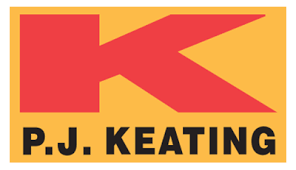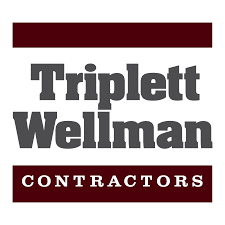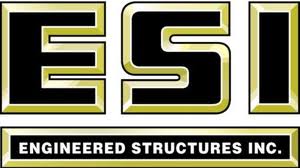Vermont Stormwater Management
Vermont State Overview
The state of Vermont and the Vermont Department of Environmental Conservation’s Watershed Management Division’s mission is, “To protect, maintain, enhance and restore the quality of Vermont's surface water resources. To accomplish this mission, the Division comprises three media-specific programs that provide for the comprehensive management of Wetlands, Rivers, and Lakes. The Division also supports the integrity of surface waters by administering programs to regulate wastewater discharges and stormwater runoff. The Division has recently completed a major initiative to improve its overall management of Vermont’s surface waters. As a result, our new Monitoring, Assessment and Planning program serves to integrate the Division’s efforts across these programs through the use of the Statewide Surface Water Management Strategy, and to develop basin plans consistent with this strategy.”
Vermont’s State Stormwater Permit Program regulates discharges (runoff) from impervious surfaces. To comply with the state’s jurisdictional thresholds revolving around the amount of impervious surfaces to meet all Stormwater Management Rules: (1) Stormwater Management Rules for Non-Stormwater Impaired Waters; and (2) Stormwater Management Rule for Stormwater Impaired Waters, the permit program mandates that any project owner or operator go through Section (A) of Vermont’s Stormwater Permit Worksheet or the State Stormwater Permit State Stormwater Jurisdiction Flow Chart to determine what permit coverage is required. An operator or owner of a project site is required by the Vermont Agency of Natural Resources to apply general permit coverage through Vermont’s State Stormwater Permit Program in order to commence any sort of land disturbing activities.
In order for a project owner or operator to apply for permit coverage on his/her construction site he/she must first determine whether their construction activities are one of the following:
Low Risk Construction Activities:
Projects that qualify as “Low Risk” do so because of favorable site conditions. For these projects, owners or operators are required to file a Notice of Intent (NOI) certifying that they will employ the measures contained in the Low Risk Site Handbook for Erosion Prevention and Sediment Control. A complete application for a Low-Risk eligible project will be automatically authorized following a 10-day public comment period provided no comments are received.
Low Risk Construction Activity Construction General Permit Application Requirements:
-
Complete Appendix A of the General Permit to determine if the project site qualifies for CGP coverage as “Low Risk.”
-
Complete the Notice of Intent (NOI) for Low Risk Projects.
-
The owner or operator must bring the completed Notice of Intent (in person) to the municipal clerk in the municipality where the project will be taking place.
-
The owner or operator must wait for the Notice of Intent (NOI) to be posted by the municipal clerk. Once posted, the owner or operator must also complete Section E of the CGP and document the date on which the Notice of Intent (NOI) was posted.
-
The operator must then submit the completed Appendix A and Low Risk Notice of Intent (NOI) to the Watershed Management Division for approval.
Moderate Risk Construction Activities:
Projects that qualify as “Moderate Risk” require the development of a site-specific Erosion Prevention and Sediment Control (EPSC) Plan that meets the requirements of the general permit and abides by all Vermont’s State Stormwater Permit Program requirements as well as Vermont Standards and Specifications for Erosion Prevention and Sediment Control.
Moderate Risk Construction Activity Construction General Permit Application Requirements:
-
The owner or operator must complete Appendix A of the General Permit to determine if the project site qualifies for CGP coverage as “Moderate Risk.”
-
The project owner or operator must prepare an Erosion Prevention and Sediment Control (EPSC) Plan. (Each EPSC Plan shall be developed by a “Qualified Professional” adhering to the Vermont Standards and Specifications for Erosion Prevention and Sediment Control).
-
The owner or operator is also required to complete all EPSC Summary Forms.
-
The owner or operator must bring the completed Notice of Intent (in person) to the municipal clerk in the municipality where the project will be taking place.
-
The owner or operator must wait for the Notice of Intent (NOI) to be posted by the municipal clerk. Once posted, the owner or operator must also complete Section E of the CGP and document the date on which the Notice of Intent (NOI) was posted.
-
The operator must then submit the completed Appendix A, Erosion Prevention and Sediment Control (EPSC) Plan and Moderate Risk Notice of Intent (NOI) to the Watershed Management Division for approval.
The state of Vermont and the Vermont Department of Environmental Conservation’s Watershed Management Division’s mission is, “To protect, maintain, enhance and restore the quality of Vermont's surface water resources. To accomplish this mission, the Division comprises three media-specific programs that provide for the comprehensive management of Wetlands, Rivers, and Lakes. The Division also supports the integrity of surface waters by administering programs to regulate wastewater discharges and stormwater runoff. The Division has recently completed a major initiative to improve its overall management of Vermont’s surface waters. As a result, our new Monitoring, Assessment and Planning program serves to integrate the Division’s efforts across these programs through the use of the Statewide Surface Water Management Strategy, and to develop basin plans consistent with this strategy.”
Read more »
At this time there are no Face-to-Face training events scheduled in Vermont.
If you are a stormwater trainer and would like to advertise your upcoming events, check out our Trainer Alliance Program by visiting our Field Advisors page.
I have more confidence...
Rating: 5.0 / 5.0
